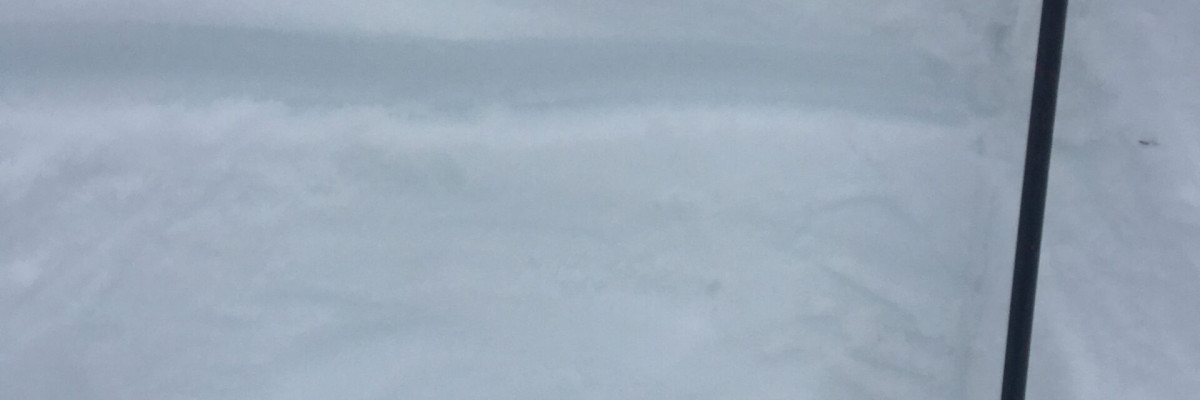The avalanche danger in the west central Montana backcountry is moderate.Wind slabs will be easy to trigger today on leeward slopes. Identify wind loaded terrain and avoid traveling on those slopes.
Good morning, this is Travis Craft with the West Central Montana Avalanche Center’s avalanche advisory for March 28, 2019. This danger rating does not apply to operating ski areas, expires at midnight tonight and is the sole responsibility of the U.S. Forest Service.
Weather and Snowpack
Mountain temperatures range from 28 F to 30 F in the region. In the Bitterroot winds are 2 mph with gusts of 13 mph out of the E. In the northern part of the advisory area, winds are 5 mph with gusts of 16 mph out of the ENE. Look for winds to increase throughout the day. Snotels reported .3 to .5 inches of SWE in the last 24 hours. Continued snow is forecasted for today. Snow line is between 4000 feet and 5000 feet.
The primary avalanche problem is wind slabs. The cold temperatures have locked the springtime snowpack back up creating a slick sliding surface that small to large wind slabs are being deposited on(video). Wind slabs will be sensitive to human triggers today and have high energy. Identify leeward terrain and avoid traveling on these slopes. Shooting cracks from skis or machines will help to identify this problem. Look for scoured slopes to help identify leeward terrain.
The second avalanche problem is loose dry avalanches. Look for small loose avalanches today. These sluffs will be small and should not be a problem unless they carry you into a terrain trap. Use small test slopes to see how the new snow is bonding to old snow surfaces.
Bottom line: Today look for changing weather conditions that will lead to changing avalanche conditions. Wind slabs on leeward terrain will be high energy and easy to trigger. Avoid wind loaded terrain. Sluffs will be easy to trigger on the slick sliding surfaces of old snow.
Avalanche and Weather Outlook
More snow and strong wind gusts will keep the avalanche danger at moderate today. See the forecast.
If you get out into the backcountry, please share your observations on our public observation page.
Ski and ride safe.
























